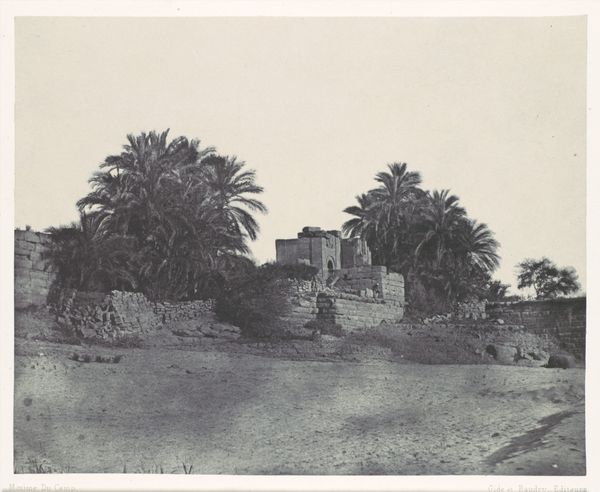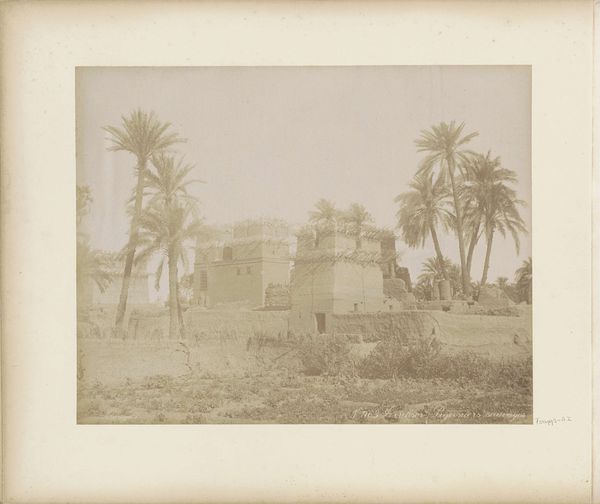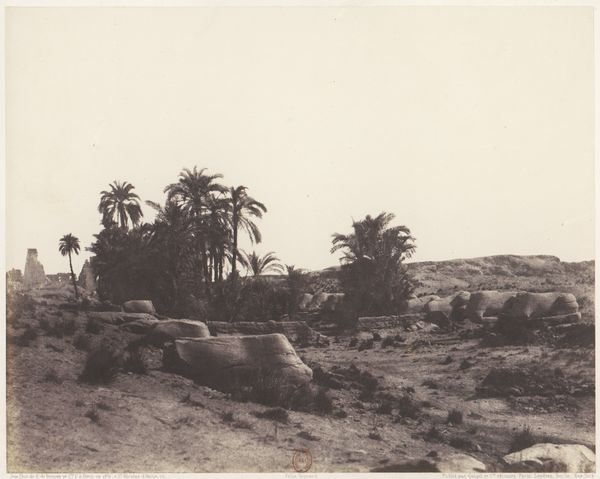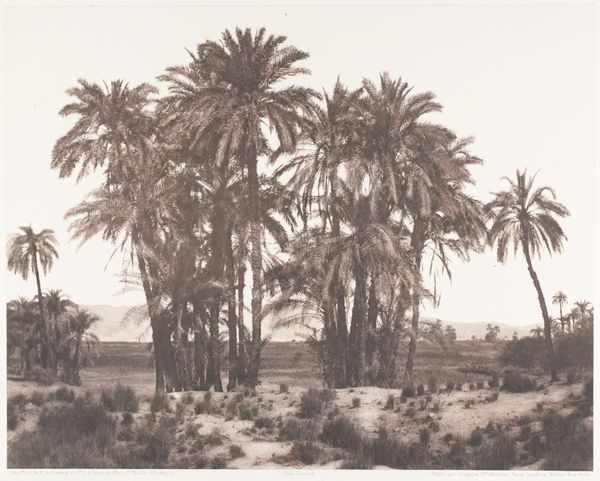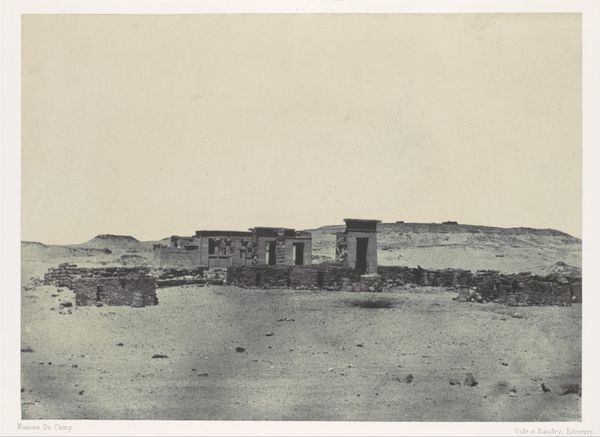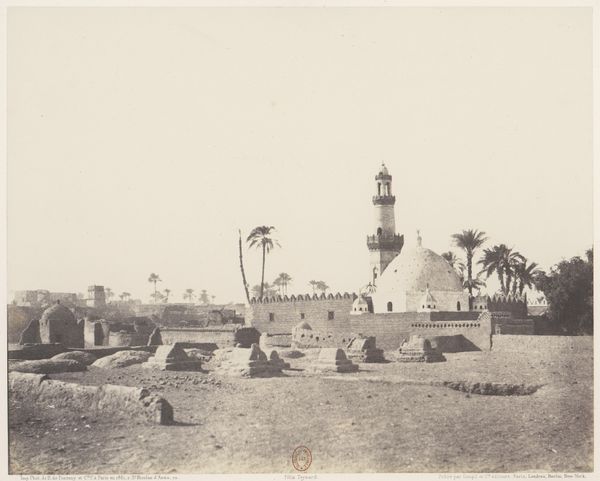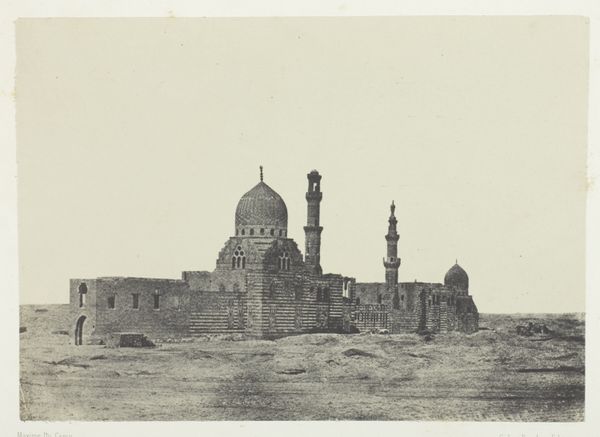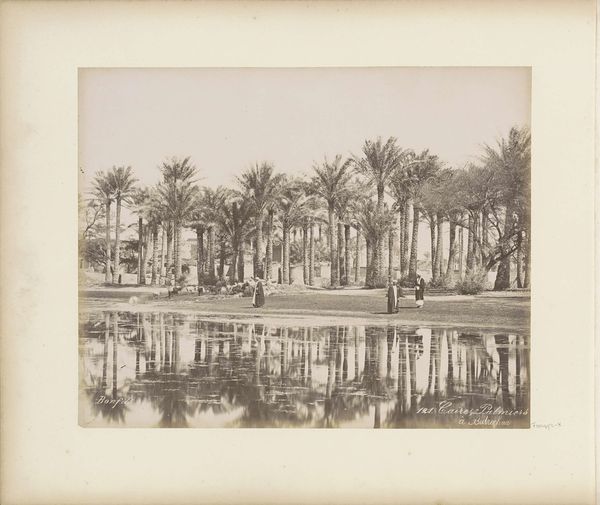
Vue de la Plaine de Thèbes prise du temple de Karnac 1867
0:00
0:00
photography, gelatin-silver-print, architecture
#
film photography
#
landscape
#
ancient-egyptian-art
#
outdoor photo
#
outdoor photography
#
street-photography
#
photography
#
outdoor scenery
#
ancient-mediterranean
#
arch
#
gelatin-silver-print
#
architecture
Dimensions: Image: 32 × 41.5 cm (12 5/8 × 16 5/16 in.) Mount: 19 13/16 × 25 9/16 in. (50.3 × 65 cm)
Copyright: Public Domain
Curator: This is Gustave Le Gray's 1867 photograph, "Vue de la Plaine de Thèbes prise du temple de Karnac," a gelatin silver print capturing a sweeping view in Egypt. Editor: It’s incredibly evocative. The tonal range is muted, giving a sense of timelessness, of antiquity rendered almost spectral by the photographic process. Curator: Le Gray was a master of photography, renowned for his landscapes. Here, he skillfully blends two separate negatives – one for the land and one for the sky – to overcome the technical limitations of capturing both in a single exposure. This practice highlights the constructed nature of even the earliest photographs. Editor: Right, and what a statement! We see these ancient ruins in the foreground, leading back to this plain stretching endlessly into the distance, dotted with palms. There's such a dialogue here between permanence and fragility; the imposing stone structures softened by the delicate trees and hazy atmosphere. But, to that point, why is it important for viewers to recognize photography's artifice here? Curator: Understanding the historical processes of photography can reveal a great deal. Here it can clarify a photographer's social intention, as photography and other visual technologies became tools of the French colonial gaze. We must acknowledge that these romanticized views were produced within a specific power dynamic. Editor: Absolutely, we can’t separate aesthetics from power. By acknowledging the photographer's role, we consider whose perspective is being centered. Le Gray offers us a visually arresting, albeit mediated, depiction. I notice that there are very few humans visible, giving that eerie, empty quality. This contributes to a particular narrative that can reinforce or resist certain understandings of life at this time and location. Curator: Indeed. Le Gray's image reveals how photography played a crucial role in shaping European perceptions of Egypt, oscillating between documenting archaeological sites and constructing an exotic other. Editor: So, what initially feels like a beautiful, if straightforward landscape, unfolds into a multi-layered meditation on history, representation, and power. Thanks for lending insight. Curator: My pleasure. It’s a stark reminder that appreciating art also requires acknowledging its complex historical contexts.
Comments
No comments
Be the first to comment and join the conversation on the ultimate creative platform.
